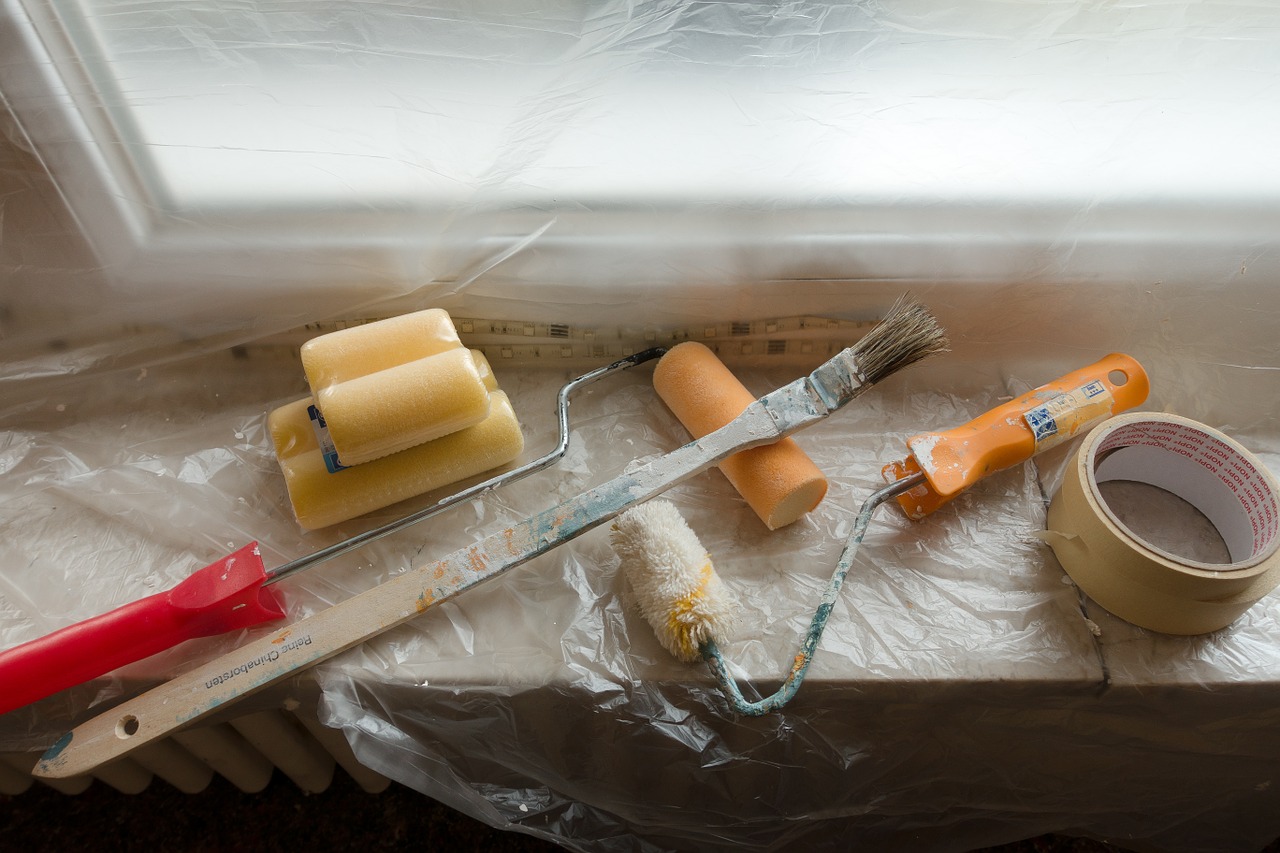Every new thing, after a period of use, deteriorates and becomes raged, faded, or outright spoiled. In other words, it is considered normal wear and tear.
It happens to rental properties as well. However, there is a difference between normal wear and tear brought about by time, and property damage inflicted through acts of negligence and carelessness.
For example, two nail holes on the wall might be considered normal tear, normal wear, but multiple nail holes is a different story.
What is Normal Wear and Tear in an Apartment?
Normal wear and tear is deterioration that a building naturally and gradually experiences after time due to age.
Now, normal wear and tear does need fixing, or replacing, after a while, i.e. in high humidity, wooden doors absorb moisture in the air, causing them to get stuck.

On the other hand, however, there is the wear and tear that is purposely caused by a tenant, or their guests, that speeds up the deterioration of a building’s fabric or hardware. This could happen intentionally or by accident, and the manager may have to charge whoever is occupying the rental unit for the damages.
Is Wear and Tear Normal in Apartments?
It is ideal for homeowners to invest in the best material and hardware when building, with the hope that it will help the building last longer. With that said every homeowner is aware of what is considered normal wear and tear, which is why a building needs frequent maintenance here and there.
It is also the dream of every homeowner to encounter a responsible tenant.
A responsible tenant means that they keep up the rental property, without needing the landlord to frequently visit for repairs. It will save time and money, even though the tenants may be held responsible for the rental property damages.
While normal wear and tear is the homeowner’s sole responsibility, any property damage that is not considered normal wear and tear, during an evaluation, will automatically fall on the person occupying the residence.
The period between one tenant moving out and another moving in is when the residence undergoes the move out inspection to determine what repairs are deemed normal wear and tear and what is not.
Then, after all of the repairs are completed and the new tenant moves in, they, together with the manager, will inspect the unit, checking and ensuring that everything is in order.
When that new tenant eventually moves out, another inspection is done to ensure that everything is as it was before, or with minimal and acceptable property damage, and the process starts all over again.
Determining Acceptable Wear and Tear
Part of the requirements for moving into a new unit is paying a security deposit that is refundable at the end of a tenant’s stay. This deposit acts as security for tenant damage that occurs during their stay, that does not qualify as normal wear and tear.
Some factors that mirror normal property damage to a building are:
● Age and State of the Building
● Period of Tenant Occupation
● Extent of the Property Damage
Age and State of the Building
Every building has a life span depending on the material used for constructing it, and the maintenance it receives to keep it in check.
An older building, by default, faces rapid deterioration, as compared to a newer building. For example, with harsh weather conditions, the roof of an older building may start to leak, which can result in staining and damage to the ceiling. This would be considered normal wear and tear, as long as the tenant notifies the management team/landlord immediately.
Another example is when walls and window panes crack because of some fault in the foundation. Thi has nothing at all to do with the tenant, even if it occurs during their stay.
Period of Tenant Occupation
A tenant moves in when everything is approved to be in good condition.
If they live in the apartment for a long period of time, it may be expected that the walls will need to be repainted, or the carpets will need to be replaced, by the time they are moving out, because the paint will have faded or peeled, and the carpet will have worn, in some areas.
These are just a few examples of what would be considered normal wear and tear when a unit is occupied for an extended period of time. Now, on the other hand, if these same repairs are needed after a resident moves out within a year or two, these very same repairs may not be considered normal wear and tear.
Extent of the Property Damage
Even when property damage has occurred, still the landlord evaluates to determine the cause.
A sink that drips water might be okay, but one that does not drain water at all could be due to carelessness, and the tenant will have to incur charges on that.
Examples of normal wear and tear is:
- Fading and peeling of wall paints around the house
- Cracking of the walls due to faulty foundation
- Wearing of carpets and rugs
- Peeling of wallpaper as a result of weak glue
- Bathroom door paints peeling because of water moisture
- Minor scrapes or scratches on wood floors
- Rotting or cracking of wooden window sills
- Worn spots or thinning varnish on wood floors due to regular use
Normal Wear and Tear vs. Facilitated Property Damages
Among the damages that may be found during an inspection are those that were caused through human error. The landlord will be strict about differentiating between normal wear and tear vs. facilitated property damages.
At this point, the collateral is the tenant’s security deposit, to cover damages. If the landlord establishes that the damages are a result of any of the points below, the tenant will likely miss out on some, if not all of their security deposit.
These damages could happen intentionally, or by accidents and they could be inflicted through:
● Carelessness.
● Abuse and Misuse
● Negligence
Carelessness
Some people do not take care of things, especially if they are not theirs. They do not feel a pinch of pity for the landlord of the building or their investment.
Say the tenant is an artist who likes to draw and paint at home. A responsible artist will place protective materials on the floor to keep the paint that spills from getting on the floor while they work on their art. However, a careless artist will let paint just drop on the floor, potentially permanently damaging the tiles.
Abuse and Misuse
When a tenant chooses to live in a rental unit, it’s because they are OK with the style, layout and decor. Still, if they take it upon themselves to renovate the unit’s interior without the landlord’s knowledge, it will be considered abuse.
At the end of their stay, it will be their responsibility to reverse the changes they made either by themselves or by choosing to pay the landlord for the damages.
It is also considered abuse if a tenant decides to drag furniture over unprotected floor tiles, while leaving visible streaks and marks, instead of lifting or carrying them.
Another example is if they pour food particles or grease down the sink that result in blockages, that again is considered abuse.
Negligence
When something in the rental unit is not acting right, the tenant must inform the manager in order to avoid further damage. This is simply because the manager typically does not have everyday access to the building.
If they fail to inform, and greater damage happens, the tenant will have then facilitated the damage through negligence. In short, it will be considered the tenant’s responsibility.
For example, old and faulty circuit breakers may experience an overcharge, or an undercharge, causing lights to flicker, or sockets to spark. To prevent further damage and safety hazards, the tenant should report the mishap to the management, so a professional electrician can be arranged to fix it.
Examples of other rental unit damages that are not considered as normal are:
- Children drawing on walls with chalk or crayons
- Pieces of flooring go missing, no matter if it’s carpet, tile, wood, etc.
- Wallpaper that is torn or ripped apart and needs to be replaced
- Toilets that do not flush and sinks that do not drain water
- Tiles that are broken or chipped
- Lightings and sockets that are burned out or do not work
- Broken window panes due to banging or smashing
Final Thought
It is extremely important, as a tenant, to be careful and mindful of all of the things in the unit.
This is because, at the end of the stay, tenant’s expect the security deposit they paid, prior to moving in, to be paid back to them.
To be precise, what is considered normal wear and tear will separate what will be charged and what will not be charged against the security deposit, when the rental’s repairs need to be made for the next resident.
If the tenant is deemed responsible for the repairs, they may get charged the full amount, but their security deposit will be used to cover the costs, as per the lease agreement, in case of property damage.









